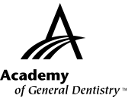|
Exercise No. 349
Subject Code: 012
Anatomy
The 15 questions for this exercise are based on the article, Proposal for clinical classification of multifactorial noncarious cervical lesions, on pages 39-44. This exercise was developed by Daniel S. Geare, DMD, in association with the General Dentistry Self-Instruction Committee.
|
Reading the article and completing this exercise will enable you to better understand:
- the types and causes of noncarious cervical lesions (NCCLs);
- the restorative options for NCCLs; and
- the shapes and depth parameters of NCCLs.
|

